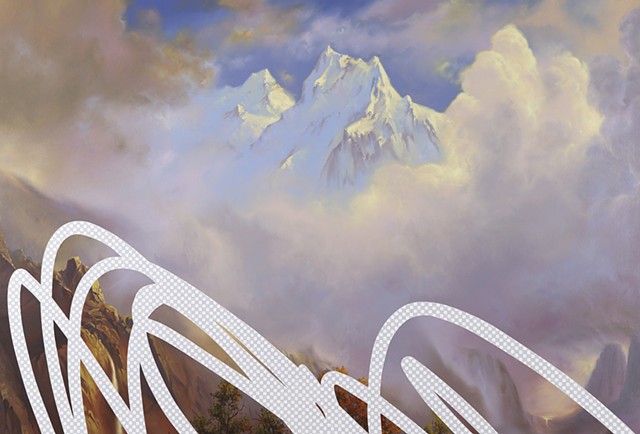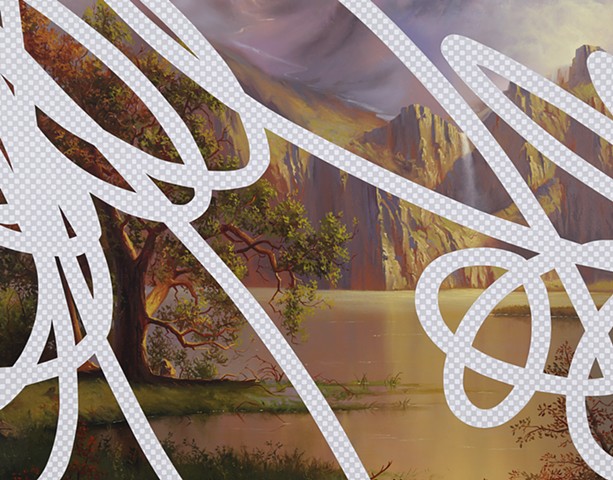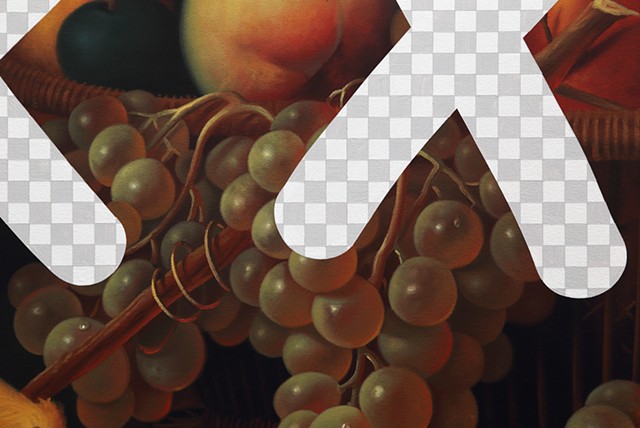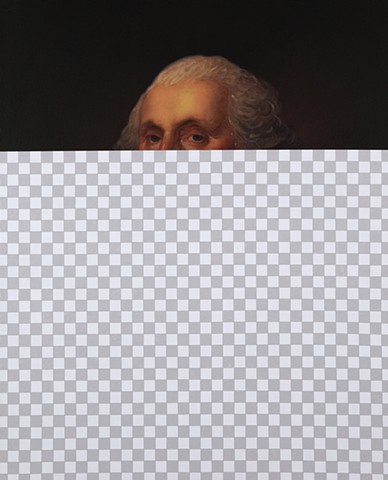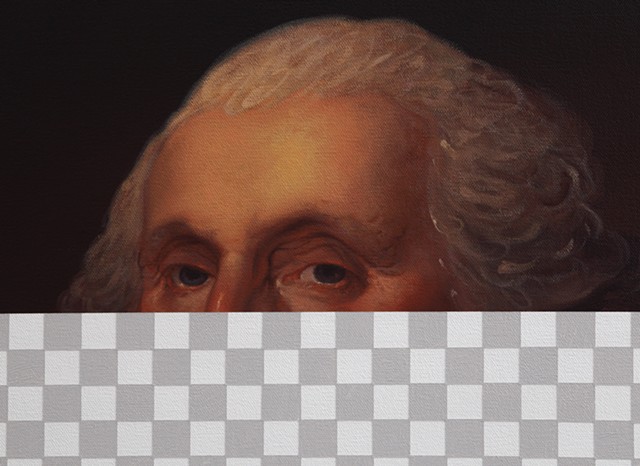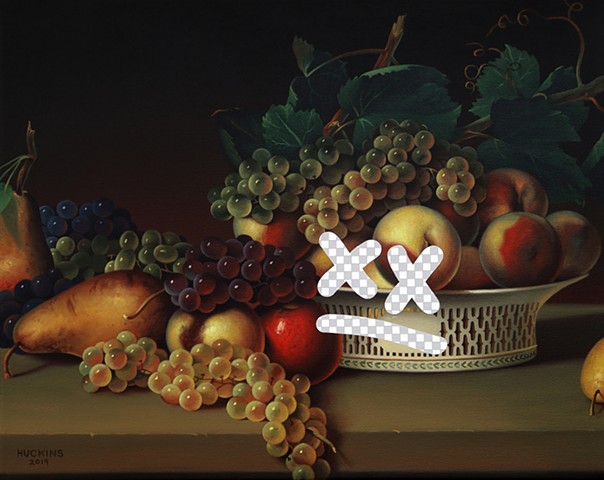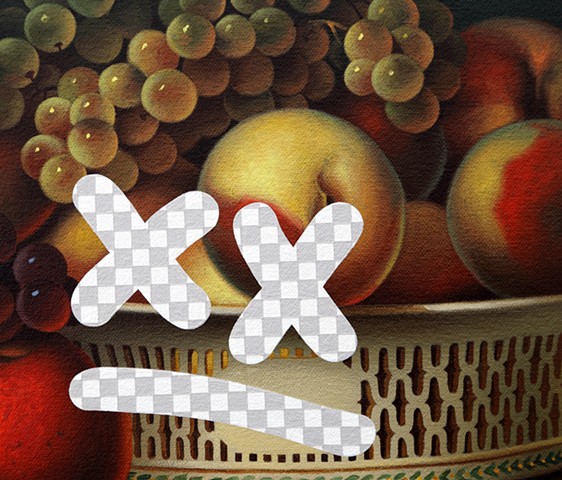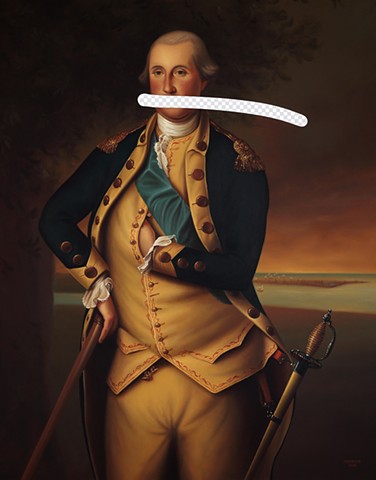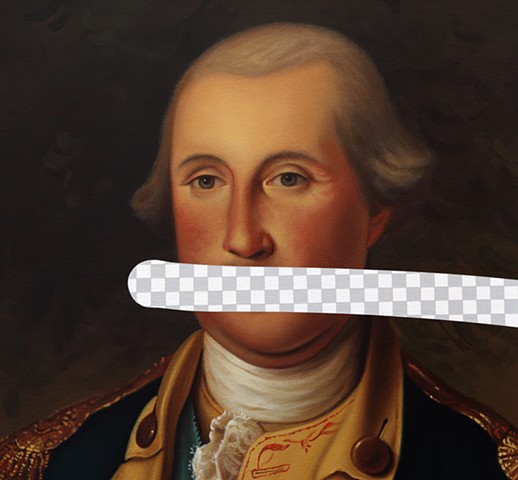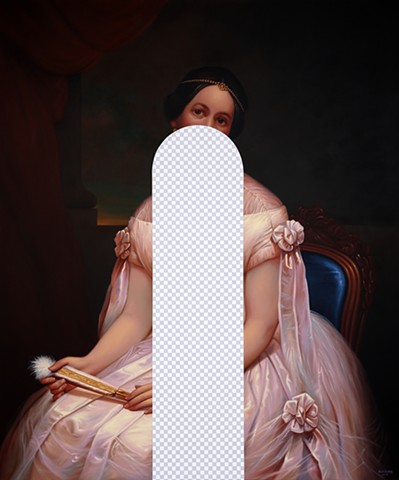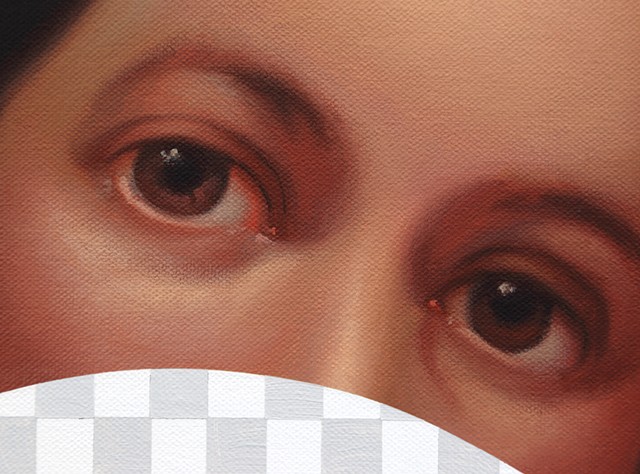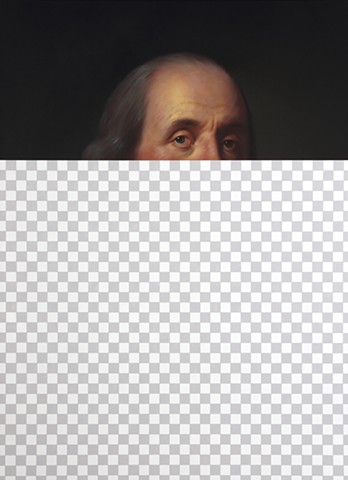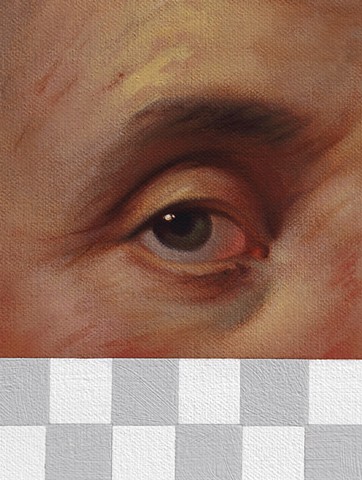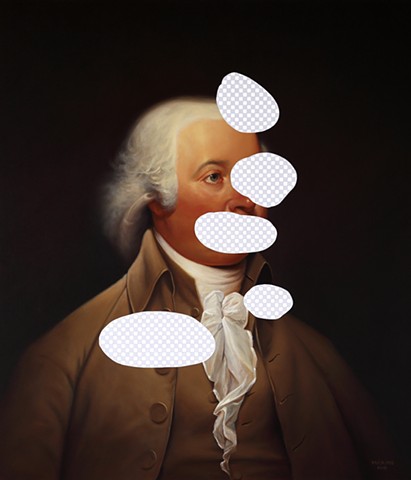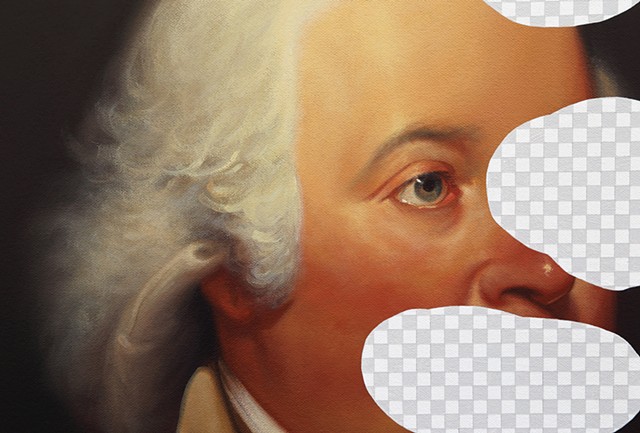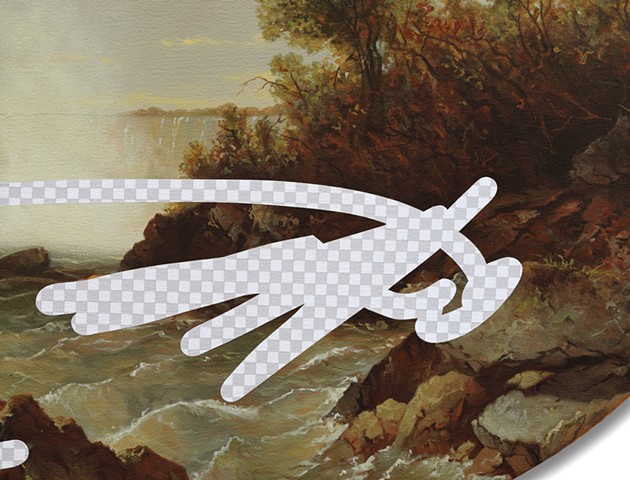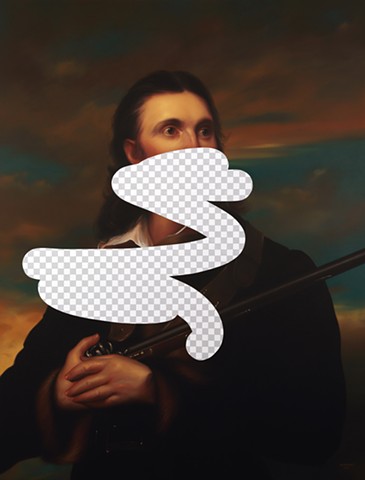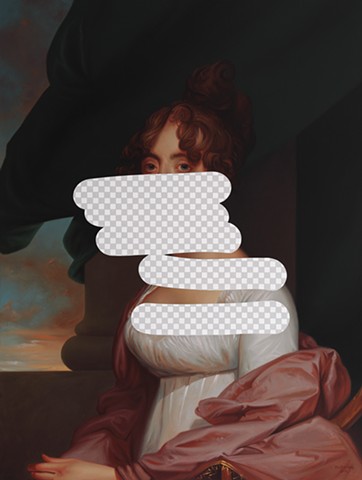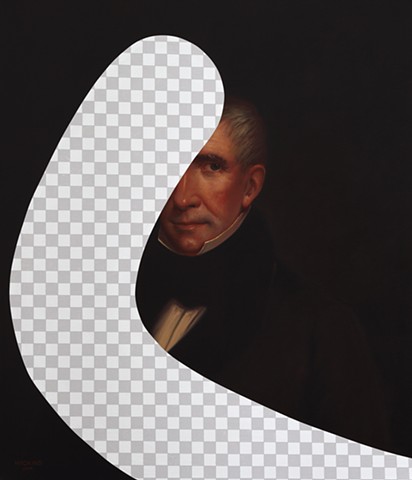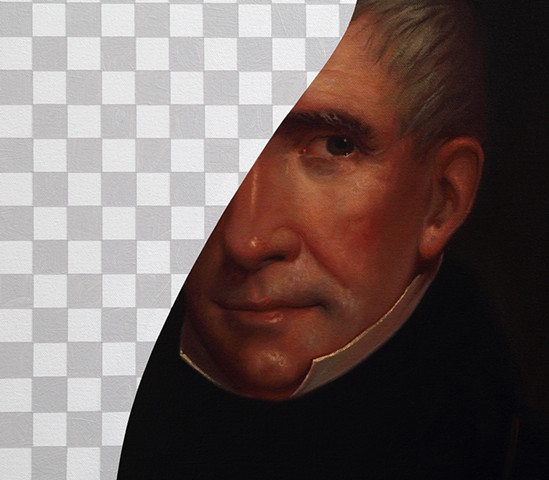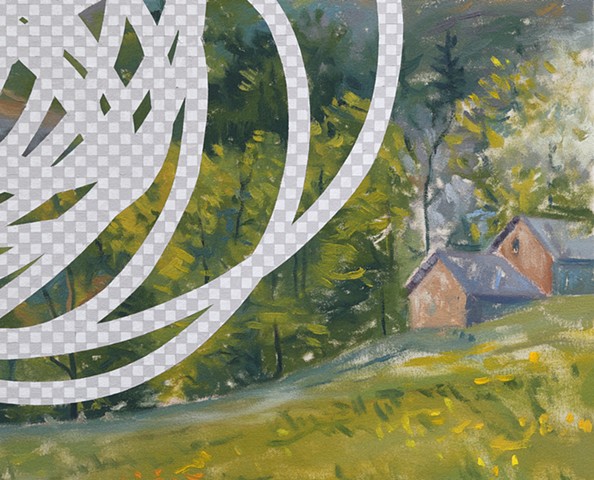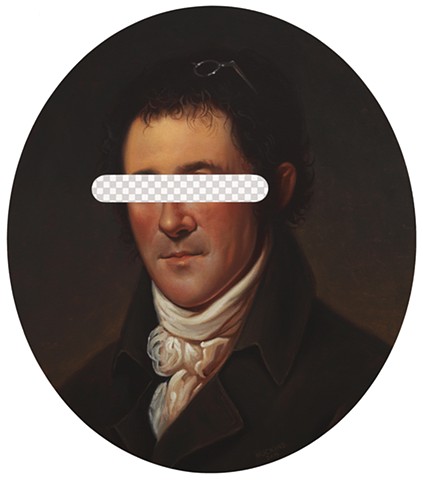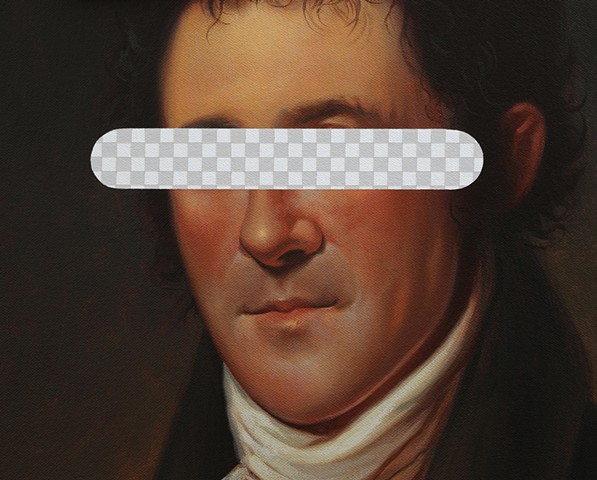The Erasures
In 1797, at the close of George Washington’s presidency, the United States was a young country hungry for patriotic art that celebrated its birth. Three years later, the White House acquisition of Gilbert Stuart’s iconic full-length portrait of Washington enshrined him in the public eye as our founding father, and established a precedent that art procured for the White House collection would function as an historical record lauding American ideals and individual accomplishments. Despite two centuries of presidents, artists and donors, honoring history—both national and individual—has persisted as the curatorial priority.
The paintings chosen as subjects for The Erasures are drawn from this very collection. The series includes portraits of presidents, first ladies, prominent politicians and landscapes of the once-expanding frontier—lands that are now protected by federal law.
Like the two preceding series, The American Revolution Revolution and The American __tier, The Erasures is a collection of historical paintings meticulously reproduced by hand, but instead of annotating the works with current texting acronyms and digital shorthand, the subjects are obscured by a hand-painted checkerboard pattern. Familiar to Adobe Photoshop users—web and graphic designers, advertisers and others who shape public opinion—the gray and white motif signifies the software’s ‘eraser’ tool has removed the underlying image.
The superimposed editing marks on The Erasure paintings vary from random, visceral swipes covering part of the subject or a small part of the work, to structured, rectilinear shapes verging on overtaking the underlying image completely. Whether erasure is portrayed as a temperamental outburst or a methodically executed plan, the resulting obliteration is much the same. It is only in the series titles that we detect resistance to such a redaction of history.
The underlying works chosen for this series originally served as testaments of those who came before us and the indelible mark they left on the world, in a very short time, not so long ago. In an era where the internet makes everyone a publisher, and digital editing tools bestow the power to create realities out of pixels, The Erasures forces us to examine our assumptions regarding the longevity of individual influence and institutions, thus raising enormous questions concerning the fragility of legacy.
If images, and by implication, legacy can be altered so easily, can one person actually erase the impact of another? Can recent progress be erased more easily than ideals fought for and won long ago? If individual legacy can be expunged, how enduring are the concepts that spawned this country? How will the current day be recorded, judged and preserved when anyone can create, or re-create, his or her own reality with a keystroke, or a mouse-swipe, or a dead-of-night tweet?
But perhaps the most important question we, as viewers, are left asking is, if one can erase history, can we also erase back to history?
NOTE: All works are physical paintings, NOT digital and/or photoshopped images.

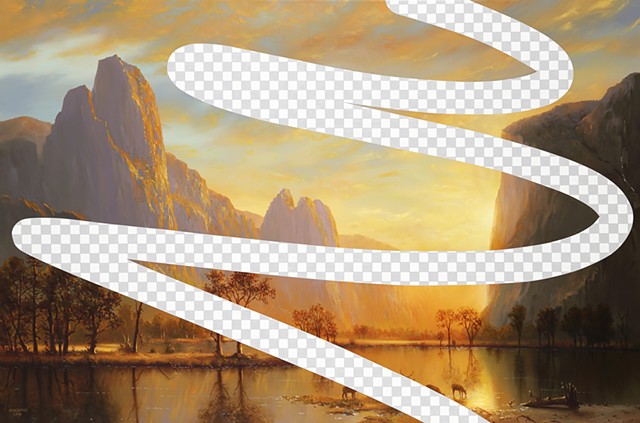
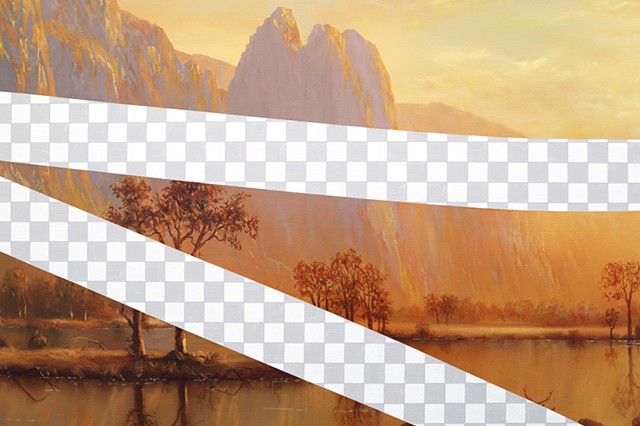
![]The Most Beautiful Place Is Far From Here (Rocky Mountain Scene, White House Art Collection Erasure No. 16)](http://img-cache.oppcdn.com/fixed/14228/assets/XM1fCXXSd92vsUgR.jpg)
